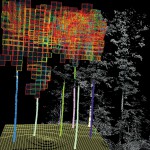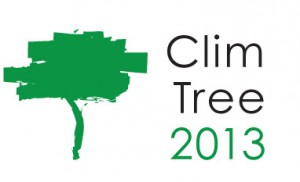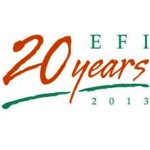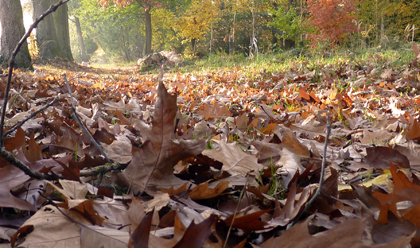Ecological Function and Biodiversity Indicators in European Soils
The EcoGenomics lab of the Tree-Microbe Interactions Department (INRA-Nancy) organized on September 17th, 2013 a workshop for EcoFINDERS’s graduate students and post-doctoral fellows.
The bioinformatics course was held within the framework of the EcoFINDERS’s WP3 and aimed to enable microbial ecologists to acquire basic bioinformatics skills for analyzing the sequence datasets generated by 454 pyrosequencing of DNA barcodes from the EcoFINDER’s LTO soil samples.
The course provided a platform for discussion of the key questions and challenges in the field of high-throughput microbial DNA sequencing. It has been delivered using a mixture of lectures, computer-based practical sessions and interactive discussions. Speakers provided an overview of key issues that affect bioinformatics tools for the analysis of microbial DNA barcoding data. Robert Griffiths (CEH, UK), Sébastien Terrat (INRA Dijon), Marc Buée, Vincent Hervé, Benoit Marçais, Francis Martin, Emmanuelle Morin, Claude Murat, Thibaut Payen and Emilie Tisserant (INRA Nancy) contributed to the lectures and practical sessions.
Twenty-three participants from Germany, Denmark, UK, France, Italy, Netherland and Portugal attended the course. The workshop was funded by EcoFINDERS and the Lab of Excellence ARBRE.
________________________________________________________
EcoFinders Project
Summary
Soils provide numerous essential ecosystem services such as: primary production (including agricultural and forestry products); regulation of biogeochemical cycles (with consequences for the climate); water filtration; resistance to diseases and pests; and regulation of above-ground biodiversity.
However, soils are subjected to many threats, so there is an urgent need to preserve this resource which is not renewable at the Human time scale. The European Commission wants to define a policy for the sustainable management of soils with a view to adopting a legally binding Soil Framework Directive, such as exists for air and water. Scientific and technological knowledge on soil biodiversity and functioning in relation with the above mentioned ecosystem services is required to reach this goal.
Soils host a huge biodiversity (microbes and fauna) of which our understanding remains very limited. Our lack of knowledge is related to: the small size of the soilborne organisms; their immense diversity; the difficulty in isolating them; and the great heterogeneity of their habitats across different scales. However, recent progress in the molecular characterization of soil biodiversity offers the exciting prospect of exploring its complexity and better understanding its functioning.
The EcoFINDERS (Ecological Function and Biodiversity Indicators in European Soils) project aims to result in:
- at the scientific level, increasing our knowledge of soil biodiversity and its role in ecosystem services across different soils, climate types and land uses
- at the technological level, the standardization of methods and operating procedures for characterizing soil biodiversity and functioning, and the development of bioindicators
- at the economic level, the assessment of the added value brought by cost-effective bioindicators, and of cost effectiveness of alternative ecosystem service maintenance policies.
The soil biodiversity studied includes microbes (archaea, bacteria, fungi) and fauna (protozoa, microarthropods, nematodes, oligochaeta), and their relation with above-ground biodiversity.
This European project, coordinated by INRA, gathers together 23 partners from 10 European countries plus China, to harness expertise in ecology, biodiversity, environmental economy, modeling, bioinformatics and database management.
Contact
Dr. Philippe LEMANCEAU, project coordinator, Tel. +33 3 80 69 30 56, philippe.lemanceau (at) dijon.inra.fr











